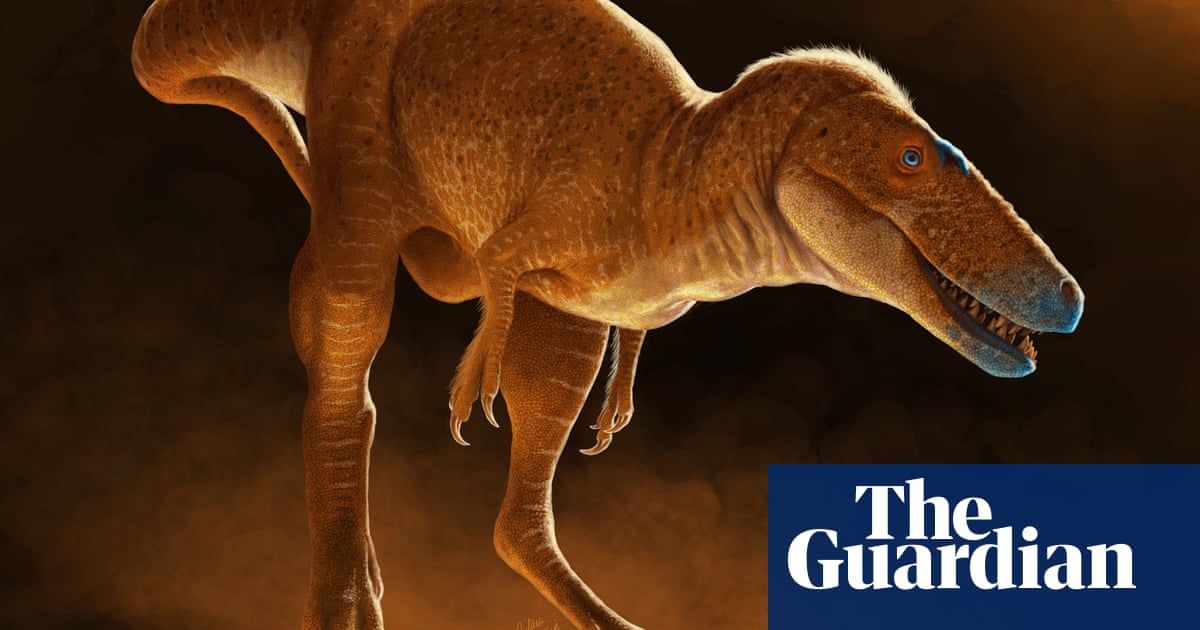Tyrannosaurs might evoke images of serrated teeth, massive bodies and powerful tails, but their most recent ancestor yet discovered was a slender, fleet-footed beast of rather more modest size.
Experts say the new species – identified from two partial skeletons – helps fill a gap in the fossil record between the small, early ancestors of tyrannosaurs and the huge predators that evolved later.
“They’re almost the immediate ancestor of the family called that we call tyrannosaurs,” said Dr Darla Zelenitsky, co-author of the study at the University of Calgary.
Writing in the journal Nature, Zelenitsky and colleagues report how they re-examined fossils unearthed in Mongolia in the early 1970s, and now held at the Institute of Paleontology of the Mongolian Academy of Sciences.
The team discovered the 86m-year-old skeletons did not belong to the tyrannosaur ancestor they had previously been identified with, an enigmatic creature calledAlectrosaurus olseni.
Instead, they belonged to a new species the researchers have calledKhankhuuluu mongoliensis, meaning “Prince of Dragons of Mongolia”.
Jared Voris, first author of the research, said the fossils showed signs of some typical tyrannosaur features. However, others were absent.
While later predators, such asTrex, could reach colossal sizes, weighing up to 8,000kg,Khankhuuluuwas more modest, at about 4 metres in length and weighing about 750kg.
Voris said that while humans would have been a mere snack to aTrex, they would have been the perfect prey forKhankhuuluuhad they lived at the same time.
“You would have been the thing that it would hunt down, and it would have been faster than you,” he said. “I would much rather run into an adultTrexthan run intoKhankhuuluu.”
The discovery also sheds light on a group of small, long-nosed tyrannosaurs called Alioramus – often called “Pinocchio rexes” – that some had proposed might sit closer to the ancestors of tyrannosaurs on the family tree than toTrexand its ilk. However, the new work shows this is not the case.
“We found that their closest relatives are the giant forms likeTrexandTarbosaurus,” said Zelenitsky.
The team say that suggestsAlioramuswas something of a quirk, evolving an exaggerated juvenile tyrannosaur form within a part of the family tree dominated by behemoths.
The researchers then used a computer model that incorporated the new tyrannosaur family tree, together with the age and locations of known species, to explore when and where missing relatives would have emerged. This enabled them to unpick the waves of migration made by tyrannosaurs and their ancestors over land bridges between Asia and North America.
Zelenitsky noted such movements were found to be less sporadic and frequent than previously thought.
The results revealedKhankhuuluu,or closely related species in Asia, migrated to North America where tyrannosaurs subsequently evolved. Some tyrannosaurs later moved back into Asia, where the largeTarbosaurusand smaller Pinocchio rexes emerged. Finally, some huge species of tyrannosaur migrated back to North America, giving rise toTrexand other enormous predators.
Prof Steve Brusatte of the University of Edinburgh, who was not involved in the work, said the age ofKhankhuuluuwas important, given there are so few fossils from that time.
Brusatte added the relatively small size ofKhankhuuluushowed it was only later that tyrannosaurs became colossal, while the study also reveals a few big migration events back and forth between Asia and North America were the drivers of much of tyrannosaur evolution. “The tyrannosaur family tree was shaped by migration, just like so many of our human families,” he said.
